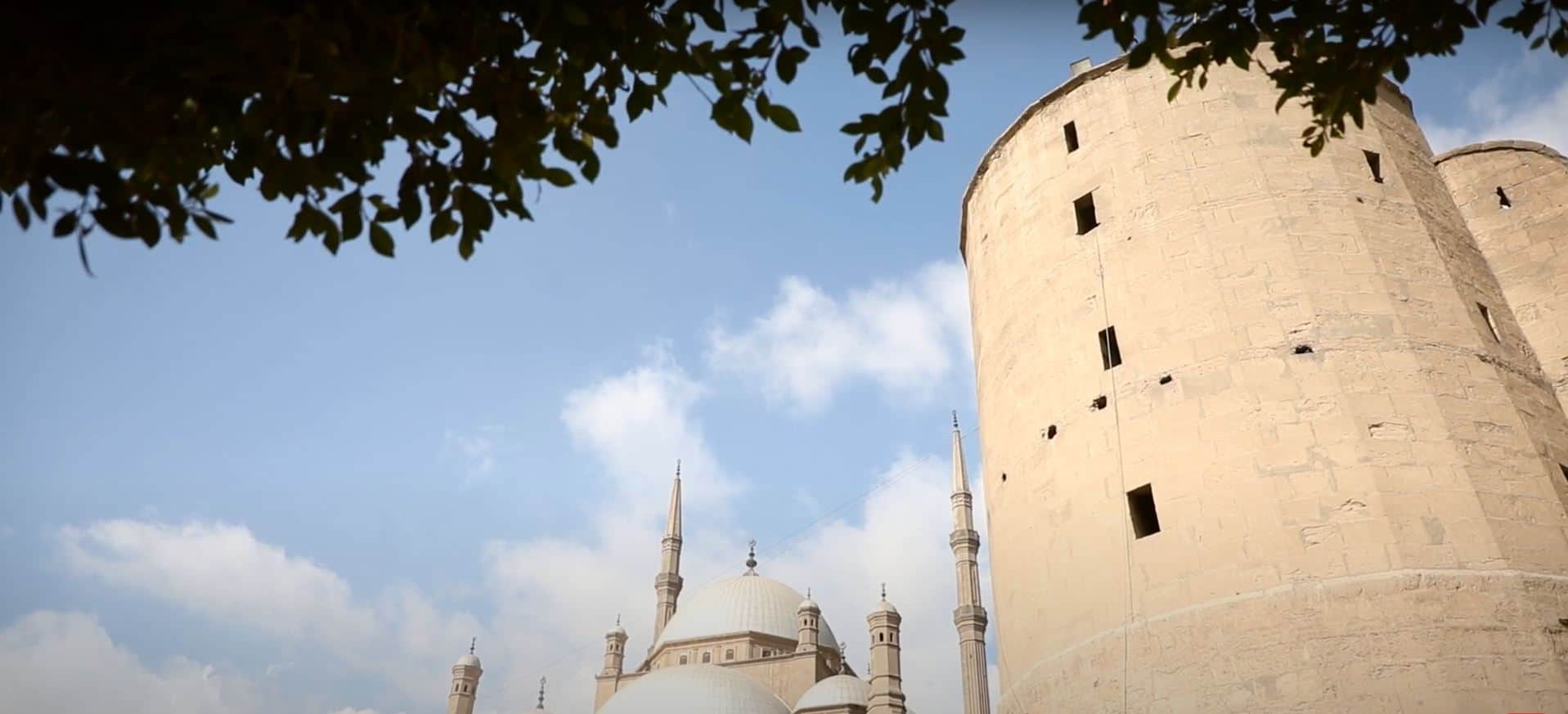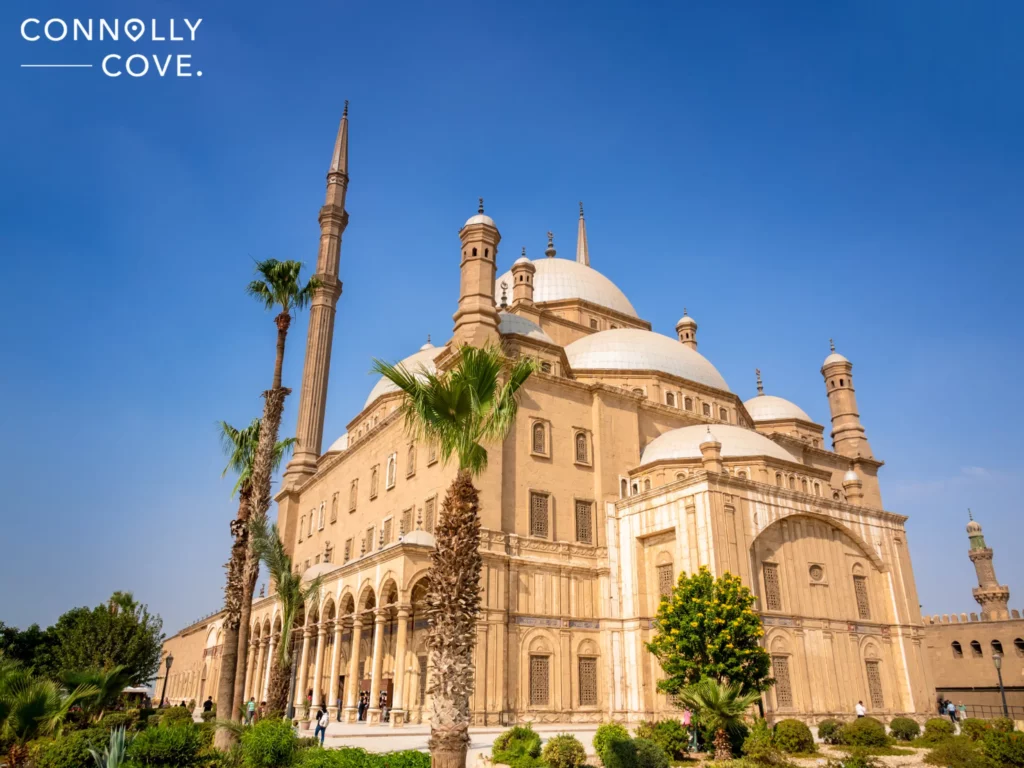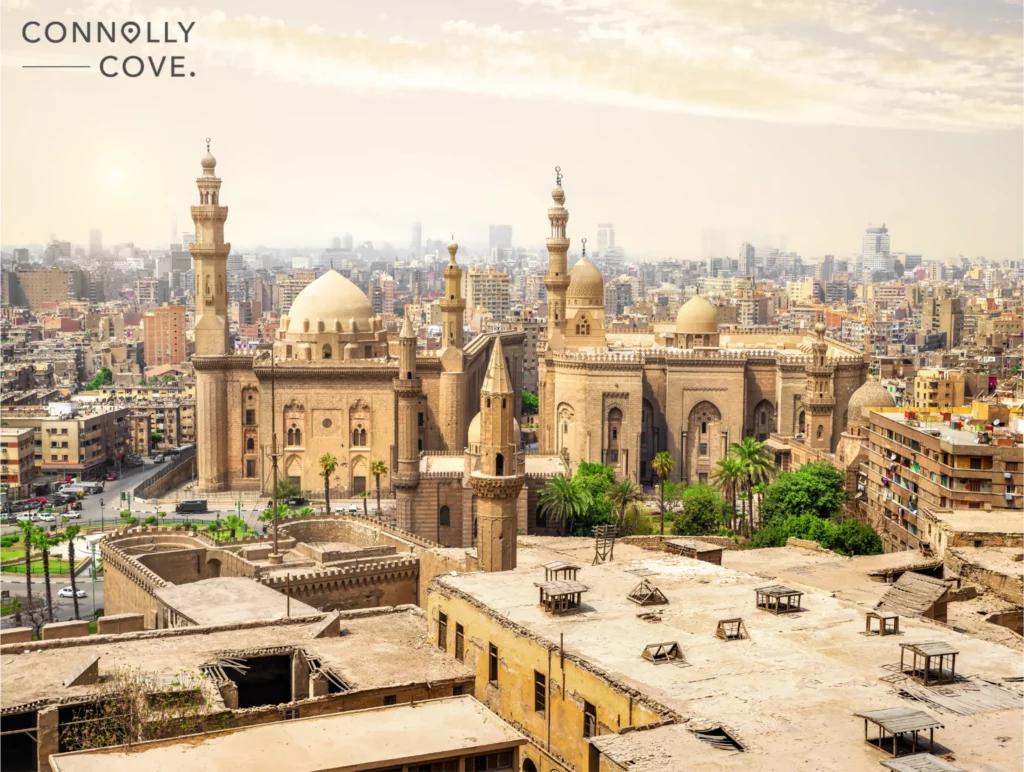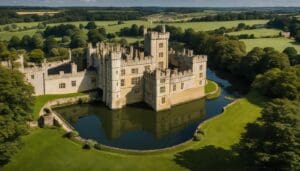Salah El Din Castle – Cairo, Egypt

Updated On: April 18, 2024 by Ahmed Samir
In the heart of Cairo, Egypt, stands a magnificent testament to the city’s rich history and architectural prowess—the Salah El Din Castle. Also known as Saladin Citadel or Cairo Citadel, this historic fortress has played a central role in Egypt’s past and is a prominent symbol of the country’s cultural heritage. With its impressive architecture, storied history, and breathtaking panoramic views of Cairo, Salah El Din Castle is a must-visit destination for anyone exploring this bustling metropolis.
Exploring the Historical Tapestry of Salah El Din Castle
The story of Salah El Din Castle dates back to the late 12th century when it was built by the legendary Muslim military leader Salah El Din, famously known in the West as Saladin. Saladin founded the Ayyubid dynasty and is remembered for his leadership during the Crusades, chivalry, and role in reuniting Egypt and Syria under Muslim rule.
Construction of the castle began in 1176 AD, and it served not only as a military fortress but also as a symbol of Saladin’s authority and the might of the Ayyubid dynasty. The castle’s strategic location atop Mokattam Hill provided a commanding view of the city of Cairo and its surroundings, making it an ideal defensive structure.
Masterpiece of Islamic Fortress Architecture
Salah El Din Castle is a stunning example of Islamic military architecture. The castle’s design incorporates Islamic and medieval European elements, reflecting the diverse influences that shaped Egypt’s history. Its imposing walls, towers, and bastions were constructed using local limestone and sandstone, giving it a warm, golden hue against the Cairo skyline.
One of the castle’s most iconic features is the impressive Alabaster Mosque, officially known as the Mosque of Muhammad Ali. Built in the 19th century, this mosque boasts a distinctive Ottoman architectural style, with its grand dome and towering minarets. Visitors are welcomed by the mosque’s spacious courtyard, adorned with fountains and surrounded by arched porticos.
Inside the mosque, the stunning interior features intricate mosaic work, ornate chandeliers, and a spectacular central dome. It is a place of worship but also a testament to the artistic and architectural achievements of the Ottoman era.
A Window to the Past
Walking through the gates of Salah El Din Castle is like stepping back in time. The castle’s well-preserved structures offer visitors a glimpse into the daily life of those who lived within its walls centuries ago. One can explore the maze-like passageways, climb the ancient stone staircases, and imagine the bustling activity of soldiers and residents who once inhabited this fortress.
One of the highlights of a visit to the castle is the opportunity to see the well-preserved medieval weaponry and armour on display. This collection showcases the craftsmanship of the time and provides insights into the military strategies and battles fought during the era of Saladin.
The Mosque of Muhammad Ali: A Jewel Within a Castle

As mentioned, the Mosque of Muhammad Ali is a crucial attraction within Salah El Din Castle. Also known as the Alabaster Mosque due to its gleaming exterior, it is a masterpiece of Ottoman architecture.
The mosque was commissioned by Muhammad Ali Pasha, the ruler of Egypt, in the early 19th century, and its construction was heavily influenced by the architectural styles of Istanbul’s imperial mosques. The central dome, flanked by four smaller domes, is a visual marvel, and the mosque’s towering minarets offer striking views of Cairo.
The mosque’s interior is equally impressive. The walls are adorned with intricately designed patterns, and the floors are covered with richly coloured carpets. The mihrab (prayer niche) and minbar (pulpit) are beautifully crafted, and the main prayer hall is adorned with exquisite chandeliers.
The Ottoman Influence
The Ottoman influence on the architecture of Salah El Din Castle is undeniable, particularly evident in the design of Muhammad Ali’s Mosque. During Muhammad Ali Pasha’s rule, Egypt came under Ottoman control, and this period left a lasting imprint on the country’s architecture and culture.
The mosque’s design incorporates elements such as the grand central dome, elegant minarets, and the generous use of marble and alabaster, all characteristic of Ottoman architecture. It is said that Muhammad Ali Pasha commissioned the mosque to resemble the famed Hagia Sophia in Istanbul, Turkey, showcasing his desire to emulate the grandeur of the Ottoman Empire.
A View to Behold
One of the most enchanting aspects of visiting Salah El Din Castle is its breathtaking panoramic view of Cairo and its surroundings. The castle’s elevated location on Mokattam Hill provides visitors with an unparalleled view of the sprawling city below.
From the castle’s ramparts, you can see the bustling streets of Cairo, the meandering Nile River, and the iconic pyramids in the distance. The sight is enchanting at sunset when the city’s lights twinkle, casting a warm glow over the metropolis.
For photographers, historians, or anyone seeking a moment of serenity amidst the vibrant chaos of Cairo, the Salah El Din Castle view is nothing short of mesmerizing.
Cultural Significance
Beyond its architectural and historical importance, Salah El Din Castle holds a special place in the hearts of Egyptians as a symbol of their national identity and resilience. It has witnessed the rise and fall of empires, the ebb and flow of history, and the enduring spirit of the Egyptian people.
The castle has witnessed many pivotal moments in Egypt’s history, from the time of Saladin to the Ottoman era and subsequent colonial and modern periods. It has stood as a symbol of Egyptian sovereignty and cultural heritage, reminding all who visit of the nation’s rich and enduring legacy.
Visiting Salah El Din Castle Today
Salah El Din Castle is not merely a relic of the past but a living testament to the vibrant culture of Egypt. Today, it serves as a cultural and historical complex, welcoming visitors worldwide to its rich heritage.
As you enter the castle, you’ll be struck by its imposing gates and well-preserved walls, which have weathered centuries of history. The castle’s interior houses museums and exhibitions that provide deeper insights into Egypt’s past, including its military history and the stories of those who lived within these walls.
The Mosque of Muhammad Ali is open to visitors, and you can explore its magnificent architecture and take in the serene atmosphere of this place of worship. Remember to dress modestly when visiting the mosque, covering your shoulders and knees as a sign of respect.
Practical Information
- Location: Salah El Din Castle is situated atop Mokattam Hill in eastern Cairo, Egypt.
- Opening Hours: The castle is generally open daily from 8:00 AM to 4:30 PM. It is advisable to check for any variations in opening hours or temporary closures before your visit.
- Entrance Fee: There is an entrance fee to access the castle, and additional fees may apply for specific exhibitions or attractions within the complex.
- Dress Code: When visiting the Mosque of Muhammad Ali, it is essential to dress modestly, covering your shoulders and knees.
Attractions Near Salah El Din Castle
Salah El Din Castle, also known as the Cairo Citadel, is undoubtedly one of Cairo’s most iconic and historically significant landmarks. Perched atop Mokattam Hill, this magnificent fortress offers a captivating journey through time and architecture. However, the castle’s surrounding area is rich in cultural and historical treasures. In this article, we will explore some of the top attractions near Salah El Din Castle, providing visitors with a comprehensive guide to experiencing Cairo’s entire historical and cultural tapestry.
1. Sultan Hassan Mosque

A short distance from Salah El Din Castle lies the Sultan Hassan Mosque, another architectural gem that dates back to the Mamluk era in the 14th century. This mosque is renowned for its imposing facade, intricate decorations, and intricate architectural details. Its grandeur and historical significance make it a fascinating stop for those interested in Cairo’s Islamic heritage.
2. Al-Rifa’i Mosque
Adjacent to the Sultan Hassan Mosque is the Al-Rifa’i Mosque, a beautiful blend of architectural styles. Built in the late 19th and early 20th centuries, this mosque exhibits Ottoman and Neo-Gothic influences. It is the final resting place of several members of the Egyptian royal family, adding an extra layer of historical interest to this enchanting site.
3. The Egyptian Museum
Located in Tahrir Square, a short drive from Salah El Din Castle, the Egyptian Museum is home to one of the world’s most extensive collections of ancient Egyptian artefacts. With over 120,000 items on display, including the treasures of Tutankhamun, the museum offers a deep dive into Egypt’s ancient history. Exploring its halls is like travelling through time, from the prehistoric era to the time of the Pharaohs.
4. Khan El Khalili Market
Just a stone’s throw away from the Egyptian Museum, the Khan El Khalili Market is a bustling bazaar that has been a hub of trade and commerce for centuries. Visitors can wander through narrow alleyways with stalls selling jewellery, textiles, spices, and traditional Egyptian crafts. It’s an excellent place to shop for souvenirs, immerse yourself in the local culture, and savour conventional Egyptian cuisine at the market’s many cafes and restaurants.
5. Abdeen Palace
Abdeen Palace is a historic royal residence turned museum in the heart of Cairo. Built during the 19th century, it served as the primary residence for the Egyptian monarchy until the revolution of 1952. The palace now houses a museum showcasing an impressive collection of art, historical artefacts, and royal memorabilia. A visit shows Egypt’s modern history and connections to European royalty.
6. Coptic Cairo
A short distance from Salah El Din Castle, you’ll find Coptic Cairo, an area rich in Christian history. Explore ancient churches such as the Hanging Church (Saint Virgin Mary’s Coptic Orthodox Church), which dates back to the 3rd century AD, and the Coptic Museum, which houses a significant collection of Christian artefacts and manuscripts. The area provides a fascinating contrast to the Islamic and Pharaonic history prevalent in other parts of Cairo.
7. Al-Azhar Park
Al-Azhar Park offers a lush oasis just a short drive from Salah El Din Castle for a serene escape from the city’s hustle and bustle. This beautifully landscaped park was built on a historic rubbish dump site and now features gardens, fountains, and scenic viewpoints overlooking the old city. It’s an ideal place to relax and enjoy a peaceful stroll.
8. The Gayer-Anderson Museum
This museum is a hidden gem in the heart of Islamic Cairo. The Gayer-Anderson Museum is named after Major R.G. Gayer-Anderson, a British army officer who resided in a 17th-century house near Salah El Din Castle. The museum showcases his eclectic collection of art and artefacts from various periods, offering a unique perspective on Cairo’s cultural heritage.
9. Old Cairo Walls
While exploring the area around Salah El Din Castle, keep an eye out for remnants of the ancient city walls that once fortified Cairo. These historic walls, known as the Old Cairo Walls or the Walls of Fatimid Cairo, bear witness to centuries of history and have been an enduring symbol of the city’s endurance.
Conclusion
Salah El Din Castle stands as a testament to the enduring legacy of Egypt—a nation steeped in history and culture. Its commanding presence atop Mokattam Hill offers visitors a glimpse into the past, a panoramic view of the present, and a hopeful perspective on the future.
From the medieval grandeur of its architecture to the spiritual serenity of the Mosque of Muhammad Ali, Salah El Din Castle is a place where history and culture converge. It reminds us of the great civilizations that have left their mark on this land and the indomitable spirit of the Egyptian people.
A visit to Salah El Din Castle is more than just a tourist experience; it is a journey through time, a celebration of culture, and a connection to a nation’s proud heritage. It is a place where the past meets the present and where the stories of Saladin, Muhammad Ali, and countless others continue to resonate in the heart of Egypt’s bustling capital.






